#jcs 2007 madrid
Explore tagged Tumblr posts
Text
shoutout to ignasi vidal singing 'superstar', gotta be one of my favourite genres.
the outfit, the singing, him putting on his sunglasses to jesus??? serving cunt the whole performance
#ignasi vidal's judas my beloved#jcs#jesus christ superstar#jcs 2007 madrid#jcs 2007#jesucristo superstar
7 notes
·
View notes
Text

Jesucristo Superstar Madrid 2008 - 2009 Tour
Geronimo Rauch as Jesus
Lorena Calero as Mary Magdalene
Ignasi Vidal as Judas
22 notes
·
View notes
Text
jcs madrid 2007 watch!!! i've seen this before, but it's been a year. i remember LOVING IT SO MUCH!!!
my reactions:
* the first couple songs were alright, maybe it was just this particular take i watched. the singers seem to hit their stride around hosanna for me
*that said, the jesus and mary here are STELLAR, their voices and emotions are AMAZING
*this also has the distinction of being of being one of the few herods i actually sat down and watched (look, he's not my fave.) his expressions hooked me in. the ACTING and the MAGIC TRICKS??? and his VOICE??? yes!!!!
*this is one of my fave gethsemanes FOR SURE!!!!! WOWW!!!! the build from vulnerable to begging and broken was excellent
*HOLY SHIT THAT JESUS CHRIST SUPERSTAR RENDITION THO!!! judas absolutely shines here. HE PUTS THE SUNGLASSES ON JESUS
*fuuuuuckkkkk the whole crucifiction preparation and execution scene???? Woah holy fuck!!!!!
overall: HOLY SHIT THIS WAS GOOD!!!! yeah this is def one of my favorite versions FOR SURE!!!!
#jcss#jcs madris 2007#this is the one version i've seen in which jesus does a MIRACLE#literally the only thing is i didn't really get the gay undertones#but HOLY SHIT THIS IS SO GOOD!!!! may see if i can get a cd or dvd
1 note
·
View note
Text
This is the 2012 Summer Station ID of TV5. The Summer Station ID was themed "Iba Ka-Summer Ang Kapatid!".
The Summer Station ID theme song was written, produced and performed by Willie Revillame who is the DJ of TV5. Somehow, He did produce the 2011 Summer Station ID Theme Song which is themed “Kapatid, Summer Na, Sama Ka!”. The Summer Station ID features some extreme sports like racing, skateboarding, surfing, bicycling, rollerblading and skydiving.
The Summer Station ID also features the TV5 crew members like Luis Manzano, Matteo Guidicelli, DingDong Dantes, Enchong Dee, Rocco Nacino, Dennis Trillo, John Lloyd Cruz, Benjamin Alves, Johan Santos, Ivan Dorschner, JC de Vera, Martin Escudero, Gerald Anderson, Sef Cadayona, Edgar Allan Guzman, Vice Ganda, Willie Revillame, Boy Abunda, Mo Twister, Ivan Mayrina, Mark Salazar, Raffy Tima, Lourd de Veyra, Shawn Yao, Gilbert Remulla, Martin Andanar, Seph Ubalde, Atom Araullo, Alex Santos, Rhea Santos, Pinky Webb, Luchi Cruz-Valdez, Kris Aquino, Sarah Geronimo, Royce Cabrera, John Wayne Sace, Marky Cielo, Kit Thompson, Derek Ramsay, Rafael Rosell, Onemig Bondoc, Mark Herras, Simon Ibarra, Diether Ocampo, Derrick Monasterio, Lester Llansang, Coco Martin, Ahron Villena, Mikoy Morales, Fred Payawan, Carlo Aquino, Ken Chan, Paolo Serrano, CJ Muere, Renz Fernandez, Kokoy de Santos, Ruru Madrid, EJ Falcon, Yves Flores, Pekto, Empoy Marquez, Zoren Legaspi, Jiro Manio, Addy Raj, Sid Lucero, Xian Lim, Juancho Triviño, Jun Sabayton, Aga Muhlach, Jake Cuenca, Ramon Bautista, Randy Santiago, Diego Castro III, Baron Geisler, Betong Sumaya, Dominic Roque, Michael V., Allan K., Chuckie Dreyfus, Mark Anthony Fernandez, Tirso Cruz III, Wowie de Guzman, Sam Milby, Marco Alcaraz, Carl Cervantes, Hero Angeles, Gabby Eigenmann, Geoff Eigenmann, Ronwaldo Martin, Kristoffer Martin, Sandino Martin, Edu Manzano, Jericho Rosales, Neil Coleta, Daniel Fernando, Antonio Aquitania, Allen Dizon, Isko Moreno, Troy Montero, Jomari Yllana, Nash Aguas, Valeen Montenegro, Emman Abelda, Joshua Dionisio, Belle Mariano, Donny Pangilinan, Charlie Dizon, Jazz Ocampo, German Moreno, Shalala, Dagul, Arnold Clavio, Howie Severino, Gary Valenciano, Enzo Pineda, Marco Gumabao, Dion Ignacio, Jason Abalos, Enrique Gil, Liza Soberano, IC Mendoza, Jerald Napoles, Kim Chiu, Pauleen Luna, Louise de los Reyes, Maja Salvador, Lianne Valentin, Carmina Villaroel, Eugene Domingo, Nora Aunor, Ina Raymundo, Dina Bonnevie, Kathleen Hermosa, Candy Pangilinan, Bea Alonzo, Marian Rivera, Sheryl Cruz, Klea Pineda, Grace Lee, Kristine Hermosa, Angel Locsin, Ellen Adarna, Shaina Magdayao, Sanya Lopez, Heaven Peralejo, Jessie Mendiola, Ivana Alawi, Coleen Garcia, Dianne Medina, Kylie Versoza, RR Enriquez, Iya Villania, Cindy Miranda, Angelika dela Cruz, Andrea del Rosario, Sunshine Cruz, Princess Ryan, Arcee Muñoz, Ritz Azul, Alice Dixson, Tuesday Vargas, Eula Caballero, Enrico Cuenca, AJ Dee, Christian Bables, Vince Gamad, Jameson Blake, Paulo Avelino, Adrian Alandy, Lance Serrano, Pancho Magno, Korina Sanchez, Pia Arcangel, Connie Sison, including twin brothers Rodjun and Rayver Cruz, Julius Babao and his wife Tintin Bersola, Ogie Alcasid and his wife Regine Velasquez and The Fast and the Furious racers like Max McGrath, Mia Toretto, Letty Ortiz, Sean Boswell, Brian O’Connor, Tobey Marshall, Orange Julius, Slap Jack and Suki. But the Summer Station ID features the return of Flint Lockwood after the 2011 Summer Station ID of TV5 which is “Kapatid, Summer Na, Sama Ka!”. Luckily, Flint Lockwood is now driving the 2010 Dodge SRT Viper GTS in the 2010 video game Forza Horizon. But Flint Lockwood’s actor was Tom Holland, a Dutch born American actor and comedian who started his career at the age of 15 in 2007. He first appeared in the 2007 horror movie Land of the Dead from Warner Bros. Pictures, Skydance Productions, Dune Entertainment, Plan B Entertainment and Happy Madison Productions.
The Summer Station ID contains some commercials like when Luis Manzano, Matteo Guidicelli, DingDong Dantes, Enchong Dee, Rocco Nacino, Dennis Trillo, John Lloyd Cruz and Benjamin Alves go longboarding in San Francisco, California in the Rogin-E Commercial, Johan Santos surfing in Ocean Beach at San Francisco, California in the Fit N’ Right Commercial, Ivan Dorschner skateboarding in London, United Kingdom in the Enervon Commercial and Korina Sanchez, Pia Arcangel and Connie Sison racing downhill in San Francisco, California in the pH care Commercial featuring rock singer Gary Valenciano, DJ Willie Revillame, Master Boy Abunda, Emcee Mo Twister and the TV5 crew members skydiving in Dubai, United Arab Emirates in the Rebisco Extreme Commercial including the clips from the 2004 movie The Fast and the Furious 3 when Brian O’Connor in his 1998 Ferrari Enzo challenges to a race with his rivals Orange Julius, Slap Jack and Suki in their Japanese respective street racing cars like the RX-7, Supra and S2000 which appeared in the 2006 DreamWorks movie Cars 2, the 2008 movie The Fast and the Furious 4 when the World Grand Prix racers are starting their engines, the opening of the 2006 video game Hot Wheels: Beat That and the E3 trailer of the 2010 video game Forza Horizon where Tom Holland drives the yellow Dodge SRT Viper GTS.
However, This is also the second Summer Station ID to feature Hot Wheels cars after the first Summer Station ID of TV5 which is “Kapatid, Summer Na, Sama Ka!” in 2011. This is also the only Summer Station ID to feature all of the TV5 crew members but this was also the only Summer Station ID to feature Marky Cielo before his death in November 30, 2012. But according to Vice Ganda in the TV5 sitcom show Banana Split before the Summer Station ID was filmed, Luis Manzano, Matteo Guidicelli, DingDong Dantes, Enchong Dee, Rocco Nacino, Dennis Trillo, John Lloyd Cruz, Benjamin Alves, Johan Santos, Korina Sanchez, Pia Arcangel and Connie Sison were at San Francisco, California when they are having fun in the sun but Ivan Dorschner was at London, United Kingdom because it was his birthplace where he decides to go skateboarding and have fun in the sun. Somehow, the other crew members were at Dubai, United Arab Emirates as they are going extreme and having fun in the sun. But according to Coco Martin, Korina Sanchez, Pia Arcangel and Connie Sison were too sexy to skydive. When they skydive, Their underwear can be shown. Due to this, They wore jackets to prevent them from becoming too sexy as their dresses were sleeveless. Eventually, Korina Sanchez and Connie Sison were wearing their white pantyhoses and Pia Arcangel was wearing her black knee high socks to prevent them from revealing their underwear when they do stunts. Luckily, The Hot Wheels cars have turned to life-sized versions like in video games in the 2006 video game Hot Wheels: Beat That! where those racers drive those cars like in real life. But the clip where Luis Manzano, Matteo Guidicelli, DingDong Dantes, Enchong Dee, Rocco Nacino, Dennis Trillo, John Lloyd Cruz and Benjamin Alves go longboarding in San Francisco, California can be re-used in the future Summer Station IDs of TV5 including the future 2014 Summer Station ID of ABS-CBN which is "Basta't Ka-Summer Kita, Kapamilya!" and the future 2017 Summer Station ID of GMA which is “Mas Mainit ang PaGMAmahalan”. Eventually, This originated in the 2010 Summer Station ID of GMA which is “All-Stars and the Sun” where Kim Chiu, Kristine Hermosa, KC Concepcion, Meg Imperial, Liza Soberano and Lovely Abella go longboarding in San Francisco, California. Somehow, The clips are also re-used in the future 2014 Summer Station ID of TV5 which is "Pinoy Summer, Da Best 4 Eva!" where all of the TV5 crew members are going extreme for a big summer party around the world. But this was also the only Summer Station ID to feature some TV5 personalities speaking before they skydive like when JC de Vera said, “Talk about the first Summer Station ID to feature all of the TV5 crew members having fun in the sun! No drama or problems? We’re outta here!” Somehow, Gary Valenciano has said “I Love It! Rock N’Roll!” when skydiving with his bandmates Enzo Pineda, Marco Gumabao, Dion Ignacio and Jason Abalos but Gary Valenciano bumped into Arnold Clavio and Howie Severino who are a comedy duo from ABC-5. Howie Severino and Arnold Clavio are best friends But Howie Severino and Arnold Clavio signed a contract with RPN-9 in 2010 which is now known as CS/9 in 2011. In 2013, CS/9 will be changed to 9TV. Somehow, Arnold Clavio signed a contract to ABS-CBN in 2005. Eventually, Enrique Gil said “Hey! Wait for Us!” when skydiving with his love interest Liza Soberano but the couple bumped into IC Mendoza and Jerald Napoles when they are testing out the hang glider before they could jump off from the plane. Somehow, Paulo Avelino has said “Cannonball!” and Pancho Magno has said “OK, I Hate Skydiving, Later Hater!” as he was hanging similar to Enrico Cuenca. But the other TV5 crew members can be heard yelling as they are jumping out from a plane.
0 notes
Text
Interview: Zuloark
Weltraum, a radio podcast about space on the jabbering Independent Coastal Radio NOR we hosted Juan Chacón, an architect, researcher and educator. He is the co-founder of the collective Zuloark (2001), which enables the open-source distribution of architectural and urban planning knowledge, a co-founder of the cooperative Zoohaus (2007) and part of the open-source network Inteligencias Colectivas (2010).
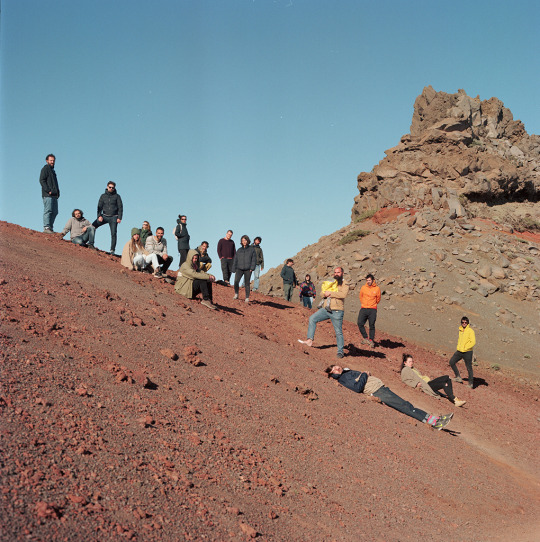
Zuloark's Collective Portrait at IX Zuloark International Congress in La Palma, Spain (2020). | Photo © Lourdes Cabrera
Since 2009, Juan has been researching community development models in Berlin. With Christina Serifi (Digital Architectuul Fellow 2020), he co-founded the Tirilab initiative, which explores intercultural heritage related to local technologies, gastronomy and cultural specialties of rural communities in northern Greece.
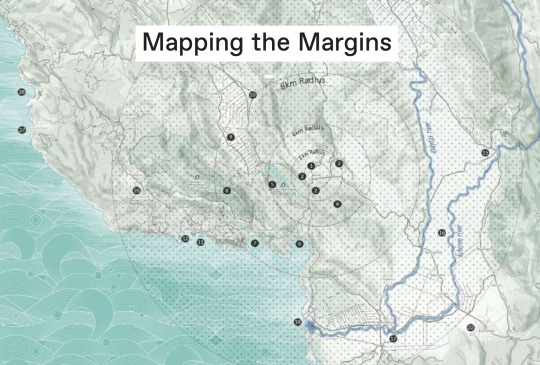
An atlas of rural commons in Northern Greece by TiriLab (Christina Serifi and Juan Chacón) were part of Future Architecture. | Photo via Future Architecture
Juan taught as a member of zuloark and researcher at UDK in Berlin, Pontificia Universidad Javeriana in Bogotá, Technische Universität in Berlin and San Jorge University in Zaragoza. His work with zuloark and zoohaus has been exhibited in the MoMA in New York, the Akademie der Kunste in Berlin, the Lisbon Architecture Triennial and the Matadero Museum in Madrid, among others.
-
Zuloark is an open office for architecture and urbanism. You co-founded it in Madrid in 2001 and in 2010 expanded its headquarters to La Coruña, Berlin, Bologna, Athens and La Palma. What does open office mean?
Juan Chacón: For Zuloark the word open office is not really well defined. Since our principle is based on belonging to the collective, It means that the environment or the name is open to everyone for participation. Also the word open reflects open source, that’s why we use it to define ourselves. Of course, there are so many voices in the collective and each one is defined in a different way.
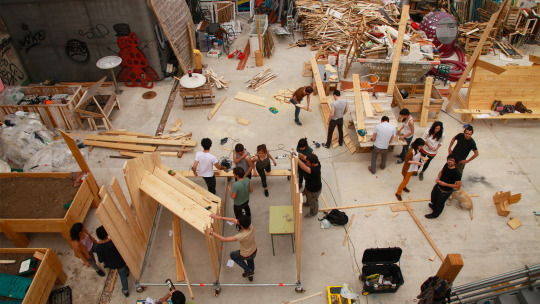
Workshop in El Campo de Cebada, Madrid in Spain (2012). | Photo © zuloark
What is its approach?
JC: First of all we will need to define what it means architecture. We can understand architecture as a built environment but you can understand architecture as a place where education happens and then spaces are created in different ways. The practice of architecture can unfold in different ways.
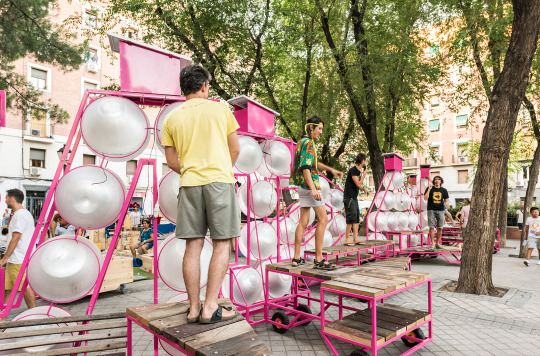
F.U.A!! Imagina Madrid (Zuloark + Enrique Espinosa -Eeestudio- + David Cardenas + Lys Villalba + Juanito Jones), Madrid, Spain (2017-2018). | Photo © Javier de Paz García
In Zuloark we don’t close a definition of one type of architecture but we try to engage with architecture in different layers and ways. Therefore we develop projects in different scales, we engage different communities and agents, we are trying to involve different parts in our practices, all this to create better places in a more participatory way that engages more people in the design of it.
In all these countries that I’ve mentioned?
JC: In 2001 we founded Zuloark and in 2010 we expanded. We founded it while we were students and between 2008 and 2010, after finishing our studies, we started to professionalize the structure. In that period members started to move around Europe and elsewhere, so we found a way to adapt to its members. When a member moves in a city also the office moves there and starts to activate different networks.
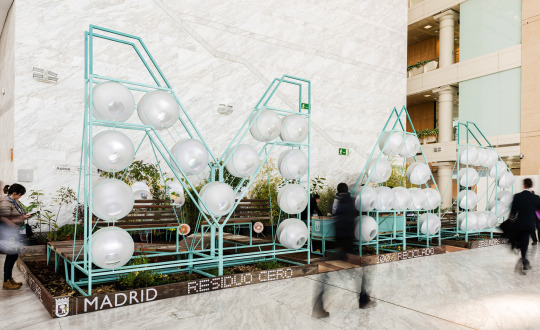
MADPAZ Conama Madrid (Zuloark + Enrique Espinosa -Eeestudio- + David Cardenas + Lys Villalba + Juanito Jones + María Mallo) Madrid, Spain (2016-2027). | Photo © Javier de Paz García
In a way you also have an open structure of work?
JC: In the last ten years we have been trying to develop governance, forecasting and evaluation systems and tools. We try to be strict in the way we organize, to benefit the participants and projects that are common to everyone. This creates the independence of work with some guidelines and fixed points towards the collective in order that we can be all coordinated. This methodology intends to create a structure that allows flexibility but at the same time allows the collective to work as a network not as independent units.
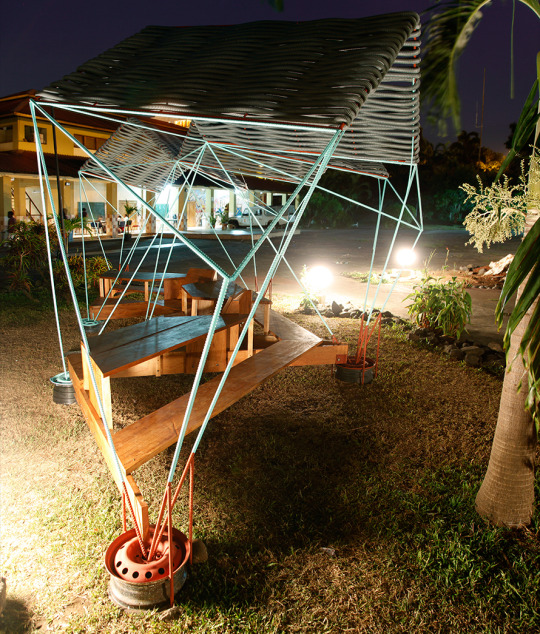
Pavillion in CCE Malabo, IC Red Guinea (Zoohaus) , Equatorial Guinea (2015). | Photo © zoohaus
Zuloark involves tactical urbanism, participation, festivals and construction workshops in a DIY way. How do you involve users in architecture?
JC: We never use the word user. It doesn’t exist in our vocabulary. We always involve the group of people or community in the process of final design. We share the methodology of how we can build the place together. When we design for example a public square, we don’t think about how we will work with the users. We are going to be part of this square and of the group of people creating the place by itself.
You co-founded the cooperative Zoohaus, which initiated the international practical research Collective Intelligences; what is the field of this research?
JC: Zoohaus is a wider network than Zuloark. It is a network launched in 2010 that tries to rephrase what we are doing. It was constituted in Madrid as a cultural association that engaged in cultural projects related to the public space. The idea is to engage and collaborate with networks all around the world based on intelligent design. We started to create a catalog where anybody can upload and contribute to its database their solutions. It is not organized by institutions but is coming from communities or individuals.
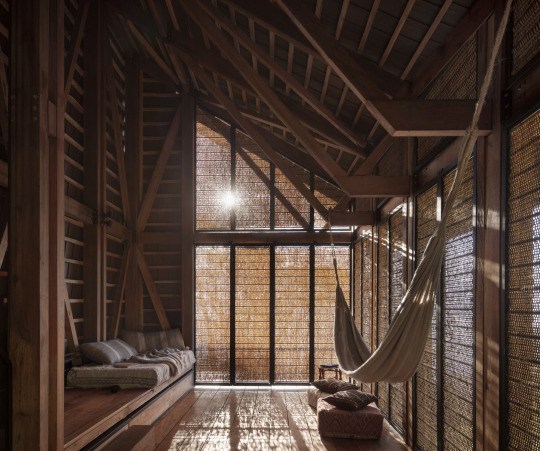
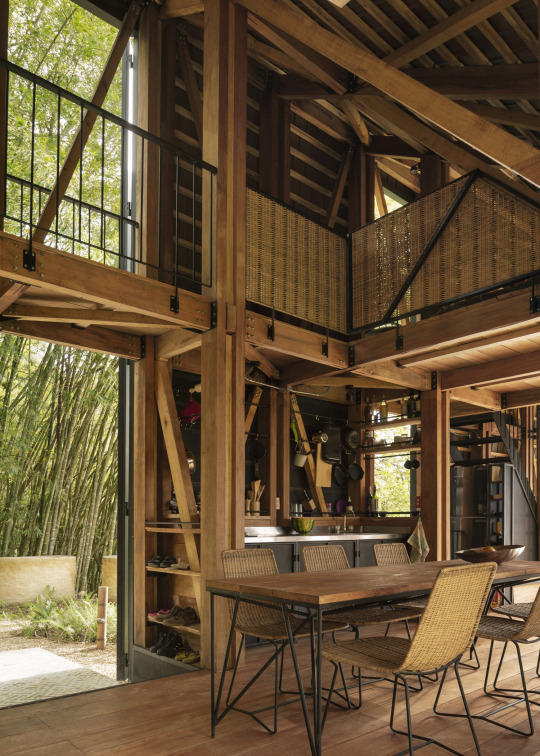
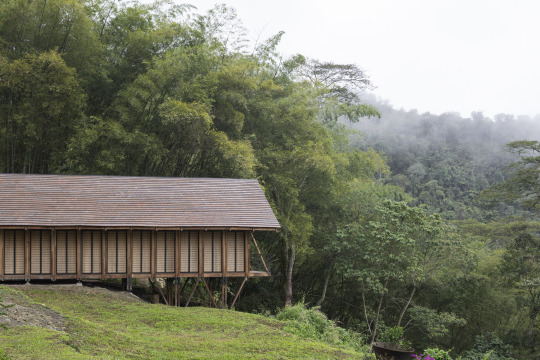
Casa Tejida en NOcaima (Santiago Pradilla y Zuloark), NOcaima Cundinamarca, Colombia (2019). | Photo © Federico Cairoli
Zuloark has had an active involvement in academic contexts, teaching in Madrid, Berlin and Monterrey. What is based on your educational practice?
JC: ...is based on ourselves. The most important educational process for Zuloark is Zuloark itself. We consider a collective as a kind of learning environment. We were always talking about the Vygotsky’s Zone of proximal development, a concept that explains how you can learn things by helping each other and creating environments of professional learning, where you can always engage with new skills. This is the core of Zuloark. The second thing started with educational models in collaboration with universities in a more punctual way, proposing workshops or formats that can take education out of the universities itself. Some of us engaged in a more formal way inside universities with an approach of situated knowledge, always learning about a specific case going out of the theoretical level and trying to create hands-on spaces.
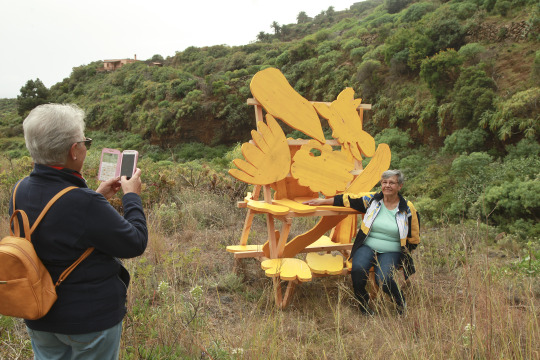
Aquí hay Dragones La Palma, Canary Islands, Spain (2020). | Photo © zuloark
How do you manage to fund your projects?
JC: The funding is very diverse, fifty percent are public coming from cultural institutions through grants and open calls, also applying for European funding. These funds are for self initiated projects. Other part is based on private commissions for clients, which want to be involved in participatory projects.
Your collaborations include different collectives; how do you choose them and develop the working process?
JC: There are many levels, one of them is based on a daily basis collaboration where people have a regular income, then is a network of collaborators that have some collaborations during a year in some project and we define them as individual agents. We create a lot of partnerships with other entities to learn from. All collaborations are developing during a period of time so we can create some kind of trust among each other.
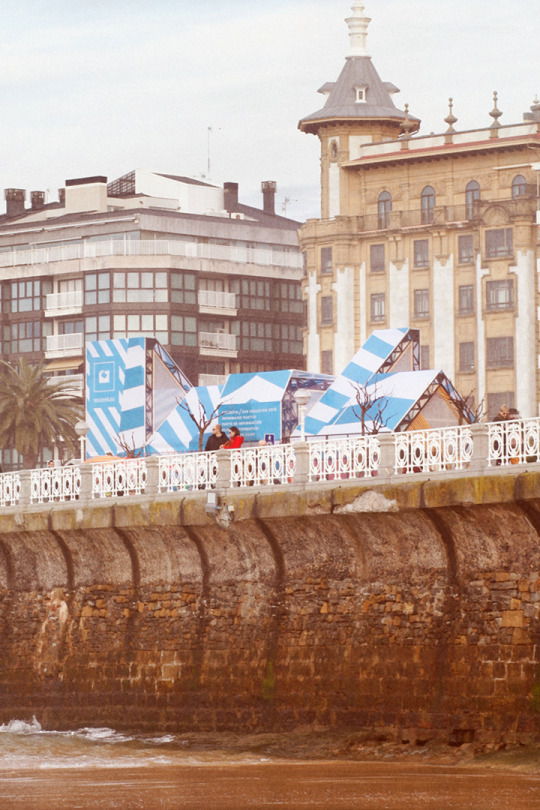
Yesterday you said tomorrow Information Pavillion and 274 Benches (Zuloark + Tipi Studio + Alberto Rey), San Sebastian, Spain (2016).| Photo © zuloark
On what shall architecture focus in the future?
JC: On situated knowledge, waste, emissions, environment, society and social interactions.
You can listen to the WELTRAUM interview on Independent radio NOR

4 notes
·
View notes
Text
La imagen tetradimensional en la atmósfera religiosa de Chamula
Hace algunos años, un ministro religioso -David Yonggi Cho- cuya relación con el arte podría considerarse nula escribió un libro llamado “La Espiritualidad de la Cuarta Dimensión”, este autor plantea una especie de ensoñación en relación a la fe y sus manifestaciones señalando que la 4ta dimensión es el lugar desde el que Dios y el diablo influyen en la vida humana, para Cho, acercarse a la cuarta dimensión solamente es posible mediante la imaginación, ¿y qué es la imaginación sino la capacidad de crear imágenes?
Durante este tiempo en el que hemos podido contrastar las diferentes propuestas artísticas en derredor del video como lienzo he cuestionado demasiado la pertinencia de este medio dentro del proyecto que actualmente trabajo, la razón es que hablar de los grupos chamulas (tanto aquellos chamulas que continúan con su religión tradicional -un sincretismo entre catolicismo e ideas mayas-, los que han adoptado el protestantismo como nueva forma de creer e incluso aquellos que se han convertido al Islam) y sus transformaciones religiosas es un tanto complicado ya que un pensamiento común en la región es el miedo a que la fotografía y el video robe una parte del alma, incluso en aquellos que se consideran demasiado progresivos la cámara se puede considerar invasiva por lo que aquellos que buscan mediante el video un acercamiento a la imaginación han buscado estrategias un poco menos directas.
Dominique Jonard fue un artista plástico francés que vivió en México desde 1977, su pasión por los pueblos indigenas le llevó a colaborar con ellos, destacando en este caso el corto animado “Santo Golpe”, este cuenta la historia de 2 individuos que roban un santo de la Iglesia de San Juan Chamula, durante el primer acto, un hombre busca la ayuda de un curandero para sanar a su esposa, el curandero lo logra; puede que esta pareja haya existido o no (nunca lo sabremos), sin embargo expone las dinámicas de la práctica chamánica local desde las actividades económicas, la vestimenta regional, hasta las funciones de mayordomía propias del tempo, de este corto me parece sumamente valioso el testimonio del interior de la iglesia de Chamula, he estado en ese lugar y los mayordomos son sumamente celosos con cualquier intento de representación en el templo desde quien escribe sus notas hasta quien intenta dibujar lo que ahí sucede, la representación que se puede apreciar -me atrevería a decir por experiencia- es privilegiada. Didi Huberman menciona que las imágenes que sirven como ese testimonio de determinada situación son capaces de abrir nuestra mirada sobre sus propias posibilidades, por lo tanto, producir esta “buena memoria”. (Didi Huberman, 2008, pp10
En este sentido, dicho corto se alza como un ejemplo de lo que entiendo por imagen tetradimencional, al moverse en varios planos de la esencia humana y de la escena técnica del video arte logra mostrar una abstracción de la realidad como la hemos revisado, quizá no se valga de grandes instalaciones con figuras complicadas tal es el caso de Pike, o busca formas de proyección complicadas como el caso de Rist, pero si utiliza elementos que invitan a cuestionar la postura de los autores, en especial cuando hablamos de la animación y sus implicaciones estamos conscientes de que hablamos con un testigo que está deformando la información, Barry JC Pures lo explica de esta forma:
“La animación es la nariz roja de un payaso; el cómplice con una audiencia que permite al personaje transgredir la norma, y salirse con la suya. La animación es inevitable y obviamente falsa y, por lo tanto, perfecta para metáforas”
(Purves en Encinas, 2017, pp7)
Durkheim señalaba que los elementos religiosos tienen como objeto, ante todo, expresar y explicar, no lo que hay de excepcional y anormal en las cosas, sino, al contrario, lo que tiene de constante y regular (Durkheim, 1997, pp34). Bajo esta idea, la forma de expresar la cosmovisión religiosa usualmente muestra experiencias con la imagen de forma cotidiana.
Otro ejemplo de producción religiosa que encuentro sumamente interesante -aunque se aleja del espacio del video arte- son los textiles de las mujeres chamulas, estos cumplen la función de una pantalla, son lienzos en los que se expone la cosmovisión del pueblo, los textiles son formas de lenguaje estrechamente ligadas a los procesos de identificación de los pueblos, no solamente a aquellos que se consideran indígenas, sino que como dice Michel Maffesoli: “La imagen no es el signo de lo lejano, es el emblema de lo que se vive” (Maffesoli, 2007, 104). En este sentido el textil es una forma literal de expresar las creencias ya que las formas son una especie de mapa que guía su relación con las divinidades, pero también su relación con los demás, considero que según las ideas de Cho y los distintos autores, el vestir las ideas -sin lugar a la ambigüedad en el enunciado- es una forma de interacción donde la ausencia de un elemento concreto recuerda los planteamientos de Deleuze donde lo virtual no se alza como opuesto a lo real, sino que se le percibe como un terreno fértil y potente que favorece los procesos de creación, abre horizontes, cava pozos llenos de sentido bajo la superficialidad de la presencia física inmediata (en este caso los textiles).
Existen otras piezas audiovisuales que se podrían citar al momento de reflejar la diversidad religiosa sin embargo no estoy tan seguro de poder llamarlas “artísticas” no por su forma o técnica sino por la intención de su contenido, una de esas piezas es el documental de la televisora indonesia Trans 7: Jazirah Islam, que cuenta a detalle los primeros años del Islam en México.
En estos pequeños párrafos he buscado hacer una radiografía de la pertinencia de ciertos temas en el proyecto de TTG, y quizá lograr establecer una relación entre este concepto tetradimencional y las implicaciones desde las que puedo encontrar una lectura, aunque a decir verdad me ha resultado complicado. En este sentido ha habido un criterio esencial para ligar ambas temáticas y es la utilidad de los sensible dentro del proyecto, ya el núcleo son los sitios que proveen una experiencia espiritual y su iconografía, en este sentido retomo las palabra de Maffesolli, quien dice que: “Lo sensible es fuente de riqueza espiritual, reconforten cuerpo, pero al mismo tiempo permite la plenitud del corazón”, así los elementos que brindan esta pertinencia logran trascender las barreras dimensionales.
Bibliografía.
Santo Golpe: https://www.filminlatino.mx/corto/santo-golpe?origin=searcher&origin-type=primary
Documental Jazirah Islam de Trans 7: https://www.youtube.com/watch?v=3N_tdrJUD-o
Maffesóli, M. (2007). “En el crisol de las apariencias”. Siglo veintiuno editores. Madrid.
Didi-Huberman, G. (2008). “Imagen, evento, duración”. Images Re-Vues. No. Especial 1.1-11.
Encinas, A. (2017). “Animando lo imposible”. Diábolo Ediciones. Madrid.
7 notes
·
View notes
Text
Un nuevo arsenal de fármacos revoluciona la lucha contra la enfermedad
Fuente original: Un nuevo arsenal de fármacos revoluciona la lucha contra la enfermedad Puedes ver más visitando Teleindiscreta - Las mejores noticias de actualidad, famosos, salud, belleza, cocina, motor, música y mucho más.
Cada año se diagnostican 1.800 nuevos casos de esclerosis múltiple (EM) en España, según datos de la Sociedad Española de Neurología (SEN), y es la segunda causa de discapacidad en los adultos jóvenes tras los accidentes de tráfico. Aunque a día de hoy sigue sin existir una terapia que cure esta enfermedad neurológica crónica, que en España afecta a 47.000 personas, lo cierto es que los avances producidos en su abordaje en el ultimo año abren una puerta a la esperanza para los afectados.
Entre los principales hitos, destacar, en primer lugar, la consolidación de los tratamientos orales como primera opción terapéutica, que poco a poco desbancan a los incómodos pinchazos a los que los pacientes se sometían para mantener a raya la alteración neurológica y evitar así su progresión. En segundo, el cambio de paradigma que precisamente, esta nueva generación de medicamentos ha procurado, así como la aparición de nuevas e interesantes incorporaciones al arsenal terapéutico, han propiciado un cambio en el abordaje de la enfermedad y que se resume en cinco palabras: tratar pronto y tratar fuerte. Éste fue el cambio de enfoque por el que apostaron los especialistas reunidos en el 7º Congreso Europeo y Americano de Esclerosis Múltiple (Ectrims/Actrims), que este año se ha celebrado en París (Francia).
Atacar desde el principio
La idea de este nuevo paradigma terapéutico buscaría, en lugar de escalar los medicamentos (esto es, empezar con los que se lleva trabajando más tiempo y tienen, por tanto, un mayor perfil de seguridad y más conservador), aprovechar la aparición de los nuevos fármacos, muy potentes, que permiten remodelar el sistema inmune y lograr una mayor eficacia. Y es que se está viendo que atacar la enfermedad desde el primer momento con todas las «armas» disponibles puede ser una buena estrategia, en vez de ir escalando el tratamiento porque, como apunta Guillermo Izquierdo, jefe de Neurología del Hospital Virgen Macarena de Sevilla, «cuando se utilizan antes se obtiene más beneficio. Y si los medicamentos fracasan, usar el alternativo lo antes posible mejora la evolución de la enfermedad».
Prueba del excitante momento que se está viviendo en la investigación, diagnóstico y tratamiento de la EM es la gran cantidad de avances e innovaciones presentados por la industria farmacéutica en París. Para hacerse una idea, de 1994 a 2007 había sólo cuatro medicamentos para la EM (y eran inyectables); de 2007 a 2014 se multiplicó por dos el número de tratamientos, y ahora, salen una media de dos al año, orales la mayoría.
El principal problema que plantea esto es que, aunque los conceptos se mueven rápido, la actitud de los especialistas iría algo más despacio. Es la llamada «inercia de la terapéutica», es decir, cuando «a pesar de que el neurólogo tenga toda la información disponible y toda la evidencia sea de altísima calidad, hay una inercia que hace que no reaccionemos a tiempo y que no seamos capaces de incorporar las novedades con la rapidez que sería deseable», lamenta Xavier Montalbán, director de la División de Neurología de la Universidad de Toronto (Canadá) y del Centro de Esclerosis Múltiple de Cataluña (Cemcat) del Hospital Vall d’Hebron de Barcelona.
Porque la dificultad a la que se enfrentan ahora pasa por elegir el tratamiento más adecuado para cada paciente. Y la cosa se está «complicando». Alemtuzumab es uno de los medicamentos que modifica el curso de la enfermedad y cuya administración se reduce a ocho días, en dos años, mediante infusión y en ocasiones con ingreso hospitalario y seguimiento estrecho. «Es un anticuerpo monoclonal que ataca a los receptores de los linfocitos B, los CD52, los destruye de manera intensa los primeros días y la inmunidad se paraliza. Pero después se repuebla aunque de forma diferente, con linfocitos menos agresivos con la mielina y evita la aparición de nuevas lesiones –señala Guillermo Izquierdo–. Es como hacer un “reseteo” del sistema inmune». Los resultados son muy positivos: «El 70% de los pacientes no han necesitado un tercer ciclo de infusiones y cada vez se confirman más los datos a largo plazo: pacientes libres de actividad de la enfermedad. Además, un grupo –más del 30%– encima mejora tras el tratamiento, algo que antes nunca se había conseguido. No estamos curando la EM pero sí cerca de paralizarla», continúa Izquierdo.
En la parrilla de salida se encuentra otro fármaco oral para la EM recurrente, ozanimob, que ha demostrado eficacia y seguridad en la reducción de lesiones cerebrales y recaídas y del que se espera se presente a la agencia reguladora europea para su aprobación en la primera mitad del año que viene.
También para esta fecha se espera esté disponible en España un novedos tratamiento, indicado en EM remitente-recurrente (la más frecuente) de alta actividad con al menos un brote y prueba de imagen positiva que, con sólo 20 pastillas y divididas también en dos ciclos (10 el primer año y 10 el segundo), consigue mantener a los pacientes sin evidencia de la enfermedad al menos cuatro años, lo que se conoce como NEDA (acrónimo en inglés de no evidencia de actividad de la enfermedad) y que se da cuando no hay recaídas, ni progresión de la discapacidad ni se aprecian nuevas lesiones en resonancia magnética. Aprobado en agosto de este año por la Agencia Europea del Medicamento, las expectativas levantadas son altas: «Tiene una eficacia muy elevada, seguridad más que aceptable y una durabilidad del efecto interesantísima –explica Montalbán–. Parece que puede modificar de forma positiva el sistema inmune y la reconstitución de éste, y cuando acaban estos pacientes no tendrán, en principio, un tercer ciclo de tratamiento y esperamos que muchos estén libres de enfermedad».
Consolidación
Todo lo anterior no hubiera sido posible sin la consolidación de los tratamientos orales. Así, un trabajo publicado por los expertos Mark S.Freedman, del Instituto de Investigación Médica del Hospital Universitario de Ottawa (Canadá) y el doctor Montalbán, en «Multiple Sclerosis and Related Disorders» analizó la eficacia de estos tres tratamientos orales en diferentes variables (tasa de brotes y disminución de la progresión de la discapacidad), y se concluía que las tres terapias son, al menos en términos de eficacia, similares. Aunque, las indicaciones para su uso marcadas por las agencias reguladoras (EMA, en Europa, y Aemps, en España) difieran en matices.
Debido a los distintos mecanismos de acción que presentan los tres fármacos, pueden aparecer algunas secuelas. El efecto adverso más temido por los pacientes de los tratamientos con esclerosis múltiple es la leucoencefalopatía multifocal progresiva (LMP). «Esta infección no es nueva, ya la veíamos en pacientes con sida, en los inmunodeprimidos. Esta enfermedad se debe a la presencia del virus denominado JC, por el primer paciente descrito con el microorganismo, John Cunningham», explica Guillermo Izquierdo. Esta infección resulta en muchos casos fatal o invalidante para los pacientes que la padecen y se debe a una rara infección en el sistema nervioso central del virus JC. Aunque, como puntualiza Montalbán, «lo importante es conocer el beneficio-riesgo que tienen y comentarlo con el paciente, conocer su estilo de vida, sus expectativas… Si todo se consensua resulta más fácil el control de la patología. Hay que optar por las decisiones compartidas».
ESCLEROSIS Y EMBARAZO
Se desconoce el motivo, pero la EM afecta en mayor proporción a mujeres que a hombres. Ésto, junto al hecho de que su aparición es a una edad temprana hace que repercuta mucho en los planteamientos vitales de las pacientes, como la maternidad. Ahora, gracias a los nuevos medicamentos disponibles «se ha pasado de desaconsejar el embarazo a ayudar a las pacientes lograrlo si quieren. Actualmente hay que tener en cuenta qué tratamiento toma antes de hacerlo. Los hay que se aplican durante dos ciclos (alemtuzumab, cladribina) y después la mujer se puede quedar embarazada sin tomar nada sabiendo que está protegida. Además, existe otro oral (teriflunomida) que se puede eliminar rápidamente de la sangre con colestiramina y esto supone una ventaja para las paciente porque saben que después de 11 días ya no hay medicamento en sangre y se pueden embarazadar», explica Celia Oreja, jefa de Neurología y responsable de la Unidad de EM del Hospital Clínico de Madrid.
Fuente: La Razón
La entrada Un nuevo arsenal de fármacos revoluciona la lucha contra la enfermedad aparece primero en Teleindiscreta.
from Un nuevo arsenal de fármacos revoluciona la lucha contra la enfermedad
0 notes
Text
20 notes
·
View notes
Text
ok so i just listened to jcs 2001 mexico recording. i liked it very much
it's very similar to jcs 2000 but it's missing "this jesus must die" "dammned for all time" "the arrest" and "peter's denial" :(
some highlights of this version
the way they call mary "mary", not "maría" is so funny to me
act 1 is just alright let's jump to act 2
longest "see how i die" g5 ever wtf
pilate's long mocking laugh during "but are you king, king of the jews?" then inmediately after jesus answers he goes "WHAT"
herod's song is goofy af i loved it please listen to it
judas' death ends on "does he care for me?" then right to choir. it makes it a sad and peaceful death in some way
SUPERSTAR ENDING OMG LISTEN TO IT RIGHT NOW. everything fades out and judas is alone with the guitar. he whispers "jesus... i only want to know."
overall 3/5 it's good. wish they had the other songs.
(i could tell the 2007 madrid production took some translations from this version 👀)
3 notes
·
View notes
Note
idk if you remember but ages ago you made a post ranking versions of jcs and you said that the 2007 madrid version was the best of the spanish recordings. i watched it recently (ur right btw its amazing) and i was wondering if you knew anywhere that had the lyrics written down so i can follow along better? i'm not fluent in spanish so i understand maybe 20% of the lyrics and the only transcribed lyrics i can find are from another version. no worries if not, and thanks for making that post because this version is rlly good :]
hey! i haven't found any page with the whole lyrics but in this one there are some. i'm very glad you liked that version! :)
2 notes
·
View notes
Text
youtube
This is the 2010 Station ID of TV5. The Station ID was known as “The Kapatid Network” with the theme song “Para Sa’yo Kapatid” performed by Filipino singer, songwriter, rapper, dancer, television host, actor and comedian Ogie Alcasid and his wife Regine Velasquez who is also a Filipina OPM singer and songwriter. Due to this, They have left ABS-CBN in June 29, 2010 because they had their first child who was born in May 1, 2007. Somehow, Starting in June 30, 2010, The theme “Para Sa’yo Kapatid” can be heard on Radyo5 and various radio stations nationwide.
The Station ID contains Arcee Muñoz, Ritz Azul, Alice Dixson, Mutya Orquia, Tuesday Vargas, Eula Caballero, German Moreno, Carmelito “Shalala” Reyes, Romy “Dagul” Pastrana, Lourd de Veyra, Sarah Geronimo, Randy Santiago, Kris Aquino, Christine Bersola-Babao, Ruru Madrid, Juancho Triviño, Ina Raymundo, Dina Bonnevie, Ahron Villena, Luis Manzano, Matteo Guidicelli, Paulo Avelino, DingDong Dantes, Enchong Dee, Rocco Nacino, Dennis Trillo, John Lloyd Cruz, Benjamin Alves, IC Mendoza, Jerald Napoles, Jiro Manio, Addy Raj, Sid Lucero, Royce Cabrera, John Wayne Sace, Marky Cielo, Kit Thompson, Enrique Gil, Carlo Aquino, Kathleen Hermosa, Candy Pangilinan, Marian Rivera, Sheryl Cruz, Klea Pineda, Simon Ibarra, Diether Ocampo, Johan Santos, Adrian Alandy, Derek Ramsay, Rafael Rosell, Onemig Bondoc, Mark Herras, Ivan Dorschner, Enrico Cuenca, Christian Bables, AJ Dee, Jameson Blake, Jake Cuenca, Geoff Eigenmann, Gabby Eigenmann, Pen Medina, Ping Medina, Alex Vincent Medina, Antonio Aquitania, Troy Montero, Jomari Yllana, Isko Moreno, Mike “Pekto” Nacua, Jun Sabayton, Aga Muhlach, Ramon Bautista, Baron Geisler, Betong Sumaya, Dominic Roque, Chuckie Dreyfus, Mark Anthony Fernandez, Tirso Cruz III, Diego Castro III, Carl Cervantes, Allen Dizon, Daniel Fernando, Enzo Pineda, Marco Gumabao, Dion Ignacio, Jason Abalos, CJ Muere, Pancho Magno, Vince Gamad, Fred Payawan, Lester Llansang, Derrick Monasterio, EJ Falcon, David Licauco, Ken Chan, Paolo Serrano, Renz Fernandez, Kokoy de Santos, Wowie de Guzman, JC de Vera, Martin Escudero, Gerald Anderson, Sef Cadayona, Edgar Allan Guzman, Kristine Hermosa, Angel Locsin, Ellen Adarna, Shaina Magdayao, Sanya Lopez, Heaven Peralejo, Jessie Mendiola, Ivana Alawi, Coleen Garcia, Dianne Medina, Kylie Versoza, RR Enriquez, Iya Villania, Cindy Miranda, Angelika dela Cruz, Andrea del Rosario, Sunshine Cruz, Princess Ryan, Kim Chiu, Pauleen Luna, Louise de los Reyes, Maja Salvador, Lianne Valentin, Nash Aguas, Valeen Montenegro, Emman Abelda, Joshua Dionisio, Liza Soberano, Dominic Roco, Felix Roco, Lance Serrano, Bea Alonzo, Hero Angeles, Marco Alcaraz, Jericho Rosales, Sam Milby, Neil Coleta, Xian Lim, Ivan Mayrina, Mark Salazar, Raffy Tima, Korina Sanchez, Pia Arcangel, Connie Sison, Luchi Cruz-Valdez, Seph Ubalde, Gilbert Remulla, Julius Babao, Willie Revillame, Alex Santos, Rhea Santos, Carmina Villaroel, Eugene Domingo, Nora Aunor, Atom Araullo, Shawn Yao, Martin Andanar, Paolo Bediones, Pinky Webb, Vice Ganda, Empoy Marquez, Coco Martin, Zoren Legaspi featuring president Noynoy Aquino, Ogie Alcasid and his wife Regine Velasquez who are both known as “The Snow Queen and The Slim Shady”, Master Boy Abunda, Emcee Mo Twister, twin brothers Rodjun and Rayver Cruz and special guests like Mel Tiangco, James Reid, Nadine Lustre, Diego Loyzaga, Ion Perez, Barbie Imperial, Rhian Ramos, Aljur Abrenica, Elle Villanueva, John Vic de Guzman, Julia Montes, Catherine Bernardo, Daniel Padilla, Samuel L. Jackson, Jason Statham, Arnold Clavio, Danny Glover and his ventriloquist puppet Arn-Arn, Steve Burns, Macaulay Culkin, Mike Enriquez, Sylvester Stallone, Martin Nievera, Sharon Cuneta, Will Smith, Howie Severino, twin sisters Anne Curtis and Jasmine Curtis-Smith, the Sexbomb dancers who are originally known as the Viva Hot Babes, Imee Hart, Iwa Moto, Sugar Mercado, Sheena Halili and Empress Schuck and the Artista Academy international students of the future like Akihiro Blanco from Mexico, Alberto Bruno from Germany, Benjo Leoncio from Malaysia, Brent Manzano from the Marshall Islands, Chanel Morales from China, Chris Leonardo from Kenya, Jon Orlando from Italy, Julia Quisumbing from Russia, Malak So Shdifat from Guinea, Mark Neumann from France, Marvelous Alejo from India, Shaira Mae Diaz from Spain, Sophie Albert from the USA, Stephanie Rowe from Brazil and Vin Abrenica from Japan.
The Station ID also includes Prince Hans, Queen Elsa and Princess Anna who are the characters in the early version of the adult animated computer movie Frozen which is from Walt Disney Pictures and DisneyToon Studios, Blue the Puppy from Disney’s Blues Clues who is the mascot of TV5 and South Korean boy band Momoland as a 9-member group with members, Ji Chang-min, Lee Hye-bin, Park Joo-won, Kim Tae-ha, Kim Na-yun, Lee Min-hyuk, Lee Ah-in, Lim Yeon-woo and Kim Young-jae in their school uniforms similar to the Happy Music video from Toy Story 3. Somehow, Other actors like Bembol Roco, Maricel Soriano, Gelli de Belen, Janice de Belen, Joey de Leon, RJ Padilla, Joross Gamboa, Drew Arellano, Angelica Panganiban, Alex Gonzaga, Cristine Reyes, Andrea Torres, Barbie Forteza, Sharlene San Pedro, Glaiza de Castro, Louise Abuel, Martin del Rosario, Jane Oineza, Tony Labrusca, Miguel Tanfelix, Ysabel Ortega, Bea Binene, Migo Adecer, Joshua Colet, Donny Pangilinan, Belle Mariano, Charlie Dizon, Jazz Ocampo, Elijah Canlas and Mutya Orquia do not appear at this point. Eventually, Aljur Abrenica, John Vic de Guzman, Elle Villanueva, Dominic Roco and Felix Roco moved to ABS-CBN while Rhian Ramos, Julia Montes, James Reid, Nadine Lustre, Diego Loyzaga, Ion Perez, Barbie Imperial and twin sisters Anne Curtis and Jasmine Curtis-Smith moved to GMA. However, other newscasters like Mel Tiangco moved to GMA as well and Howie Severino moved to RPN-9 where it will be changed to CS/9 in 2011 and later 9TV in 2013. Sadly, Ram Revilla did not appear in the Station ID because he died in December 30, 2009.
Eventually, The Station ID features explosions and 4th wall breaks. Blue the Puppy also broke the fourth wall two times. During the first 4th wall break, Julia Montes gatecrashes the TV5 crew member picture taking. When the picture was taken, Blue the Puppy says “Toasty!” which is the line used in Mortal Kombat. But in the second 4th wall break. Blue the Puppy runs toward the screen and says “Yosh!” while crouching down but quicker without saying “Yeet” which was only used once in the launch of TV5 which was in May 5, 2005 as Blue was chasing his ball. Later, Blue spins around while laughing. All of a sudden, Blue warped out of the box and says “Yusha!” When Blue the Puppy warps out of the box, An explosion appears. After warping out of the box, Blue the Puppy says “I Finished” after. Thus breaking the 4th wall. But this was also the only Station ID from TV5 to feature love couples in other dimensions like CathNiel from ABS-CBN, LizQuen from GMA and JaDine from TV5. Although, JaDine and LizQuen switched places. Eventually, Catherine Bernardo and Daniel Padilla appear as special guests from TV5 in 2010. Somehow, KimXi was also the only love team from GMA in 2005 until they moved to TV5 in 2010.
The Station ID contains clips from the My Name Is music video from Disney’s Blues Clues, Just Lose It from Art Attack and The Real Slim Shady and Without Me music videos from the 2002 movie Frozen where these Filipino people appear including the clips from the 1995 movie Lethal Weapon 3 and the 2003 movie Collateral where Jason Statham taunts on Clive Owen before punching him in Oscars 2004 just like in the movie from Warner Bros. Pictures.
The Station ID ends with a dinosaur plush doll sitting on a tire swing with a rainbow appearing on it with the doll’s eye twinkling and zooms out to feature the Rubik’s cube that contains the crew members that wear depending on the colors of the rainbow at the very end like Vice Ganda in red, Sam Milby in orange, Coco Martin in yellow, DingDong Dantes in green, Gerald Anderson in blue, Enchong Dee in purple, Enzo Pineda in pink and Ogie Alcasid in white. But in the 2015 Christmas Station ID of TV5 which is “Happy Ka Dito Ngayon Pasko”, The ending would contain minor changes where it will contain cameos like Rufa Mae Quinto, Julia Montes, Cristine Reyes, Dimples Romana, Alex Gonzaga, Roxanne Guinoo, Angelica Panganiban and Valerie Concepcion waving at the end replacing Vice Ganda, Sam Milby, Coco Martin, DingDong Dantes, Gerald Anderson, Enchong Dee, Enzo Pineda and Ogie Alcasid. However, Sam Milby is the only TV5 crew member to wave at the end.
0 notes
Text
now that i finished the big writing stuff i wanted to, TIME FOR MADRID 2007 JCS WOOOO
0 notes
Text
the DEFINITIVE order of productions of jesus christ superstar
it’s not easter anymore but i have been watching random productions of jcs and i wanted to do a ranking. friendly reminder that it is my opinion, and it is totally valid to have a different one :) this said, enjoy the ranking and tell me yours! x
1. Jesus Christ Superstar (1973) / Jesucristo Superstar (Madrid, 2007)
it was pretty obvious that the movie was gonna be the first one because, let’s be honest, it is the best one. the characters, the aesthetic, the ambientation is everything. i think every single one of the voices are amazing (especially, yvonne elliman’s <3). very recommended and 10/10.
the other one i put as the first one is the spanish production of 2007. i am spanish and i grew up listening to that version of jcs. contrary to popular belief, i don’t like the 1975 spanish version. i think this version is so much better (not only because it’s part of my childhood, but because the lyrics are better, since they are changed). the voices of everyone are amazing and judas and jesus are *chef’s kiss*.
if you wanna watch it is in youtube <3 (you just have to search “jesucristo superstar 2007″ and you’ll find it).
all in all, 10/10 too.
2. Jesus Christ Superstar (2000)
i ranted about this version in easter, but this one really surprised me. i am OBSESSED with this one. i just love glenn carter and jerome pradon as jesus and judas, and even though i don’t really like jerome pradon’s voice, i think they both do an amazing job.
people tend to hate/not like as much this version because is kinda lame ?? but i love how it is disposed and i truly believe jesus looks just like glenn carter. also, that ending?????????? AMAZING.
actually, the only thing i don’t like about this version is pilate, and usually, everyone likes him in this production. i’ll give the whole thing a 9.5/10.
3. Jesus Christ Superstar (2018)
this version is the first staged version i saw of jcs. and i really liked it. i think is such a good version and i love the whole aesthetic. also, it has sara bareilles, norm lewis and brandon victor dixon on it, so that’s a big green flag.
despite that, i didn’t like john legend AT ALL. no hate to john legend, i absolutely adore his music, but i don’t think he was the one to play jesus. i believe that depending on how you sing gethsemane, you make a good jesus and i don’t think he particularly did a good job (not a bad one either).
overall, it was a good production. 8/10.
4. Jesus Christ Superstar (O2 Arena)
LISTEN, DON’T HATE ME FOR THIS. i didn’t like this version. like, i did like it, but i didn’t stand out to me. one thing i have to say is that i LOVED tim minchin as judas. he makes it look so easy??????? and it is definitely NOT??????? tim minchin one of my fav judas ever. also, JUDAS SMOKING??????????? superior.
another thing i really liked was king herod’s song. i think it was entertaining, fun, and different. and the whole aesthetic of the show was pretty cool.
now, things i didn’t like. melanie c as mary magdalene. SHE WAS SO ANNOYING, I’M SORRY. from the moment she started singing in what’s the buzz? i realised i didn’t like her at all.
another thing i didn’t like, and you guys are gonna hate me for this, is ben forster as jesus. i DO think he is a good singer and actor, but i just didn’t like him. i don’t know. it’s not that i don’t like him, i just feel indifferent towards him. it was meh. but his gethsemane was stunning.
i’d give this production a 5.5/10.
and this was everything, i really hope you enjoyed this mini-ranking and tell me also your opinions! :)
13 notes
·
View notes
Text
watching jesus christ superstar 2007 madrid... so far it's really good and WOW !!!! lorena calero's voice almost had me in tears immediately
0 notes